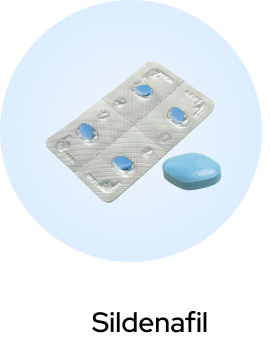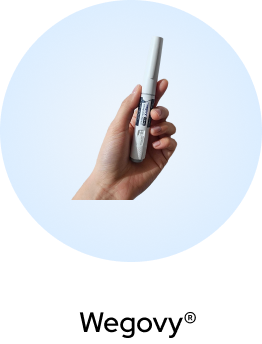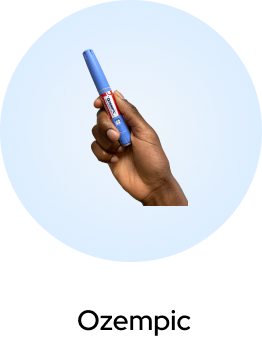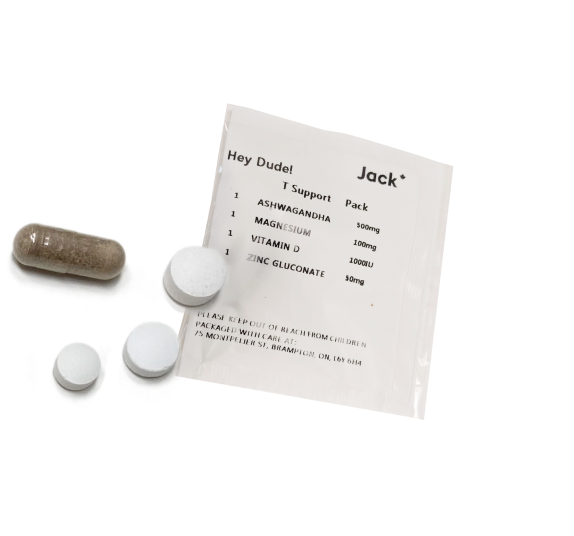Understanding the difference between Type 1 and Type 2 diabetes is crucial, especially for those struggling with weight loss or managing their blood sugar levels. This guide aims to clarify and explain these types of diabetes in an easy-to-understand manner.
What is Type 1 Diabetes?
Type 1 diabetes is a condition where the body’s immune system attacks the pancreas, the organ that makes insulin. Insulin is vital for transferring glucose from the blood into the cells for energy. People with Type 1 diabetes require regular insulin injections or an insulin pump to maintain their blood sugar levels.
What is Type 2 Diabetes?
Type 2 diabetes, on the other hand, develops when the body becomes resistant to insulin or when the pancreas does not produce enough insulin. Often linked to lifestyle factors like diet, exercise, and obesity, Type 2 diabetes can be managed with lifestyle changes and medications.
What is the Difference Between Type 1 and Type 2 Diabetes?
The main difference between Type 1 and Type 2 diabetes lies in their causes and treatment approaches. Type 1 is an autoimmune disease with no known cure, requiring lifelong insulin management. In contrast, Type 2 is often associated with lifestyle factors and may be managed or even reversed with diet and exercise.
Type One vs Type Two Diabetes Overview
Type 1 and Type 2 diabetes are both chronic conditions that affect the way the body regulates blood sugar, or glucose. Type 1 diabetes, often diagnosed in children and young adults, is an autoimmune condition where the pancreas produces little to no insulin, a hormone needed to allow sugar into cells for energy. Its onset is usually rapid and symptoms more severe.
In contrast, Type 2 diabetes, more common in adults but increasingly diagnosed in children, typically develops over many years and is often associated with obesity and inactivity.
- Type 1 Diabetes: Autoimmune condition, that requires insulin.
- Type 2 Diabetes: Often lifestyle-related, manageable through diet and exercise.
How are Type 1 and Type 2 Diabetes Diagnosed?
Diagnosis of both Type 1 and Type 2 diabetes involves evaluating symptoms, blood tests, and medical history.
Type 1 and Type 2 diabetes are diagnosed using similar tests, but the conditions themselves are different and may be distinguished by other factors like age of onset and the presence of certain symptoms.
Type 1 Diabetes Diagnosis:
- Autoantibody Testing: Alongside the standard tests, autoantibody tests can confirm Type 1 diabetes. These tests look for antibodies that are attacking pancreatic cells, a hallmark of Type 1 diabetes.
- Age and Symptoms: Type 1 diabetes is more common in children and young adults, though it can occur at any age. Symptoms often develop quickly and are more severe, including increased thirst, frequent urination, hunger, weight loss, and fatigue.
Type 2 Diabetes Diagnosis:
Diabetes Canada recommends screening for Type 2 diabetes every 3 years in individuals aged 40 and above or in those at high risk according to a risk calculator. Screening should occur more frequently (every 6 to 12 months) for people with additional risk factors or those at very high risk.
Screening and Diagnosis:
The A1C test, Fasting Plasma Glucose (FPG), and Oral Glucose Tolerance Test (OGTT) are essential tools for diagnosis, with specific considerations for ethnicity, age, and special populations like children, adolescents, pregnant women, or individuals with suspected Type 1 diabetes
- A1C Test: Measures average blood sugar levels over the past 2 to 3 months. A level of 6.5% or higher on two separate tests indicates diabetes.
- Fasting Blood Sugar Test: A blood sample is taken after an overnight fast. Diabetes is diagnosed if the fasting blood sugar level is 126 mg/dL (7.0 mmol/L) or higher on two separate tests.
- Oral Glucose Tolerance Test (OGTT): After fasting overnight, the blood sugar level is measured. Then the patient drinks a sugary liquid, and blood sugar levels are tested periodically for the next two hours. A reading of 200 mg/dL (11.1 mmol/L) or higher after two hours indicates diabetes.
- Random Blood Sugar Test: A blood sample is taken at a random time, regardless of when the last meal was.
A blood sugar level of 200 mg/dL (11.1 mmol/L) or higher suggests diabetes, especially if accompanied by signs and symptoms of high blood sugar such as increased thirst and urination.
Canadian guidelines highlight several risk factors for Type 2 diabetes, including age (40 years and older), family history of diabetes, certain ethnic backgrounds (e.g., African, Arab, Asian, Hispanic, Indigenous, or South Asian descent), history of gestational diabetes, and lifestyle factors such as being overweight and physical inactivity.
Type 2 diabetes is more common in adults, though it’s increasingly seen in children, and is often associated with obesity and a sedentary lifestyle.
The symptoms can be more subtle or absent compared to Type 1 diabetes.
Additionally, for both types, the doctor may consider any risk factors, such as family history, weight, and age, and may perform further tests if necessary.
Regular monitoring and consultation with healthcare professionals are crucial for the effective management of both types of diabetes.
Causes
Type 1 diabetes is primarily caused by an autoimmune reaction where the body’s immune system mistakenly attacks and destroys insulin-producing cells in the pancreas.
This process is believed to be influenced by genetic predisposition and possibly environmental factors, like viruses, though the exact triggers are not fully understood.
Type 2 diabetes, on the other hand, is often linked to lifestyle factors and genetics. It typically develops as a result of the body’s inability to use insulin effectively, a condition known as insulin resistance.
Over time, the pancreas fails to produce enough insulin to manage blood sugar levels.
More causes of both types of diabetes can vary, involving different factors.
Genetic Factors
The genetic factors underlying Type 1 and Type 2 diabetes are complex and involve multiple genes. In Type 1 diabetes, genetic component play a significant role, with certain genes indicating an increased susceptibility to developing the condition.
The most well-known of these are the Human Leukocyte Antigen (HLA) genes, which affect immune system functioning. However, not everyone with these genetic markers develops Type 1 diabetes, suggesting that environmental factors also play a crucial role.
Type 2 diabetes also has a genetic component, but it’s often more strongly influenced by lifestyle factors. Genes related to insulin production, glucose metabolism, and obesity risk are involved in Type 2 diabetes. In both types, family history is a known risk factor, indicating a strong genetic link.
Environmental Factors
Environmental factors play a significant role in the development of both Type 1 and Type 2 diabetes, interacting intricately with genetic predispositions.
In Type 1 diabetes, while the exact environmental triggers are not fully understood, it’s believed that exposure to certain viruses, early dietary factors, or low vitamin D levels might stimulate the autoimmune response that destroys insulin-producing cells in genetically susceptible individuals.
For Type 2 diabetes, the environmental influence is more direct and well-established. Lifestyle factors such as a high-calorie diet, excessive intake of sugary and processed foods, physical inactivity, and obesity are major contributors. Additionally, socioeconomic factors like access to healthy food and safe spaces for physical activity also play a role.
Autoimmune Disease
Autoimmune reactions are the main cause of Type 1 diabetes, where the body’s immune system attacks the pancreas.
Type 1 diabetes is classified as an autoimmune disease, where the body’s immune system mistakenly attacks and destroys the insulin-producing beta cells in the pancreas.
This autoimmune reaction is believed to be triggered by a combination of genetic and environmental factors, although the exact cause remains unclear.
The destruction of beta cells leads to a deficiency of insulin, a critical hormone in regulating blood sugar levels.
In contrast, Type 2 diabetes is not typically considered an autoimmune disease. Instead, it is primarily characterized by insulin resistance, where the body’s cells do not respond effectively to insulin, and a relative insulin deficiency due to the inability of the pancreas to compensate over time.
Weight Gain/Obesity
Weight gain is not a causative factor for Type 1 diabetes, as this form of diabetes is primarily driven by an autoimmune response that destroys insulin-producing cells, unrelated to body weight or lifestyle factors.
However, in the case of Type 2 diabetes, weight gain, particularly the accumulation of excess fat around the abdomen, plays a significant role.
Excessive body fat, especially visceral fat, contributes to insulin resistance, where the body’s cells become less responsive to insulin.
This resistance forces the pancreas to produce more insulin to keep blood sugar levels in check, leading to increased strain on these cells.
Over time, this can lead to the development of Type 2 diabetes as the pancreas becomes unable to meet the body’s heightened insulin needs.
Therefore, while weight gain is a significant risk factor for Type 2 diabetes, it is not a factor in the onset of Type 1 diabetes.
Symptoms
The symptoms of Type 1 and Type 2 diabetes can be similar but often differ in their onset and severity. Type 1 diabetes typically manifests rapidly, often over a matter of weeks, with more pronounced symptoms.
In contrast, Type 2 diabetes develops more gradually, and its symptoms can be subtler or even absent in the early stages.
Let us explore each symptom in detail.
Increased Thirst and Urination Frequency
Both types of diabetes can lead to an increase in thirst and the frequency of urination. This happens because the kidneys work overtime to filter and absorb excess glucose in your blood.
Blurry Vision
Blurry vision is a common symptom, caused by the swelling of the lenses of your eyes due to high blood sugar levels.
Blurry vision is a common symptom for both Type 1 and Type 2 diabetes, but the context and progression can differ between the two. In Type 1 diabetes, blurry vision is often one of the early signs and develops rapidly.
It is primarily due to the high blood sugar levels causing the lens of the eye to swell, altering its ability to focus.
On the other hand, in Type 2 diabetes, blurry vision may develop more gradually and can sometimes go unnoticed initially.
Fatigue/Weakness
Fatigue and weakness are signs that your cells aren’t getting enough glucose to produce energy.
Fatigue is a common symptom in both Type 1 and Type 2 diabetes, but its onset and underlying causes can differ. In Type 1 diabetes, fatigue often appears quickly and is more acute, stemming from the body’s inability to utilize glucose for energy due to the lack of insulin.
In contrast, fatigue in Type 2 diabetes tends to develop more gradually and can be subtler initially. It is caused by the body’s ineffective use of insulin and chronic high blood sugar levels, which impairs the transportation of glucose into the cells for energy.
Weight Loss
Unexpected weight loss often occurs in Type 1 diabetes when the pancreas fails to produce insulin, causing the body to break down muscle and fat for energy.
Cuts/Bruises That Heal Slowly
Slow-healing cuts and bruises are common symptoms in both Type 1 and Type 2 diabetes, but they typically become more noticeable in the latter stages of these conditions. High blood sugar levels over time can lead to poor circulation and damage to blood vessels, impairing the body’s natural healing processes.
Treatment Options
Treatment for Type 1 and Type 2 diabetes differs primarily due to the underlying causes of each condition.
Type 1 Diabetes Treatment:
- Insulin Therapy: Essential for all individuals with Type 1 diabetes since their bodies do not produce insulin. Insulin can be administered through injections or an insulin pump.
- Blood Sugar Monitoring: Regular monitoring of blood glucose levels is crucial to manage insulin dosing.
- Diet and Exercise: A balanced diet and regular physical activity are important to manage blood sugar levels and overall health.
- Carbohydrate Counting: Adjusting insulin based on carbohydrate intake can help manage blood sugar levels.
- Continuous Glucose Monitoring (CGM): Some patients use CGM systems for real-time glucose level tracking.
Type 2 Diabetes Treatment:
- Lifestyle Changes: Often the first-line treatment, including diet modifications, increased physical activity, and weight loss.
- Oral Medications: Various medications can increase insulin sensitivity or stimulate the pancreas to produce more insulin. While discussing oral medications for Type 2 diabetes, it’s important to consider availability and access to these treatments. For our Canadian readers, you can learn more about accessing Trulicity in Canada, including prescription processes and healthcare coverage.
- Insulin Therapy: In some cases, particularly when blood sugar levels cannot be controlled with oral medications alone.
- Blood Sugar Monitoring: Although less intensive than in Type 1 diabetes, regular monitoring is important.
- Bariatric Surgery: In cases of severe obesity, surgery may be an option to improve diabetes control.
Regular check-ups are crucial for both, to monitor and manage potential complications. For those considering medication options for Type 2 diabetes management, understanding the correct dosage is crucial. Our detailed guide on Mounjaro dosage provides comprehensive information to help patients and caregivers make informed decisions about this treatment option.
What are the Risk Factors for Type 1 and Type 2 Diabetes?
The risk factors for Type 1 and Type 2 diabetes differ significantly due to their distinct causes. The stark contrast in risk factors between Type 1 and Type 2 diabetes reflects the different mechanisms underlying these conditions.
Type 1 Diabetes
- Genetic factors
- Environmental factors, such as certain viruses
- Immune system activity that mistakenly attacks the pancreas
Type 2 Diabetes
- Obesity or being overweight
- Family history of diabetes
- Age, particularly being over 45
- Physical inactivity
- High blood pressure or cholesterol
Key Takeaways
- Type 1 vs. Type 2 Diabetes Causes: Type 1 diabetes is an autoimmune condition where the immune system attacks the pancreas, leading to insulin deficiency. In contrast, Type 2 diabetes arises from insulin resistance often linked to lifestyle factors such as diet, obesity, and physical inactivity.
- Diagnosis Methods: Both types are diagnosed through blood tests, but Type 1 also involves autoantibody testing, identifying antibodies that attack the pancreas. Type 2 diagnosis often includes A1C, fasting blood sugar, OGTT, and random blood sugar tests.
- Treatment Approaches: Type 1 diabetes requires lifelong insulin therapy and careful blood sugar monitoring. Type 2 diabetes management starts with lifestyle changes and may progress to oral medications or insulin therapy as needed.
- Risk Factors: Type 1 diabetes risk factors include genetic predisposition and certain environmental factors. For Type 2 diabetes, major risk factors are obesity, sedentary lifestyle, age, and a family history of the condition.
Frequently Asked Questions
Can Diabetes Be Prevented?
Prevention strategies for Type 1 and Type 2 diabetes differ due to their distinct causes. Currently, there is no known way to prevent Type 1 diabetes, as its onset is largely due to genetic factors and autoimmune processes that are not well understood or controllable.
In contrast, Type 2 diabetes has a stronger link to lifestyle factors, making prevention more feasible.
How Common is to Have Diabetes?
Diabetes is a remarkably common health condition globally. According to the International Diabetes Federation, approximately 537 million adults (20-79 years) were living with diabetes in 2021, and this number is projected to rise to 643 million by 2030. The prevalence varies by region, with certain areas experiencing higher rates due to genetic, lifestyle, and socioeconomic factors.
Are Men More Likely to Get Diabetes?
The likelihood of developing diabetes varies by gender, but it’s nuanced and influenced by several factors. Historically, men have been slightly more likely to develop Type 2 diabetes at a lower body mass index (BMI) than women. This difference is thought to be due to the way men and women store fat; men tend to store more visceral fat (around the organs) which is more closely linked to insulin resistance.
However, the overall lifetime risk of developing Type 2 diabetes is similar for both men and women, and the gap narrows with age. For Type 1 diabetes, the incidence is fairly similar between genders, though some studies suggest a slightly higher rate in males.

















 (US)
(US)



